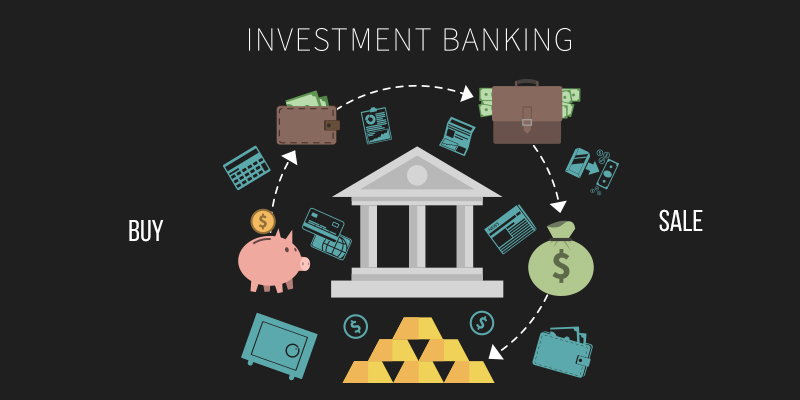Introduction to Investment Banking
Investment banking is a financial services sector that deals with the raising of capital by underwriting and acting as an intermediary between issuers of securities and investors. If you want to learn about investment banking, this is the guide for you. We’ll cover everything from what investment bankers do and how to get hired, to the different types of firms and what they do.
The Different Types of Investment Banks
There are three different types of investment banks: bulge bracket, middle market, and boutique.
Bulge bracket investment banks are the largest and most well-known firms, such as Goldman Sachs, Morgan Stanley, and JPMorgan Chase. They offer a full range of services, including corporate finance, mergers and acquisitions, trading, and asset management.
Middle market investment banks are smaller than bulge bracket firms but still have a significant presence in the industry. These firms often focus on a specific type of service or sector, such as healthcare or technology. Some examples of middle market investment banks include Guggenheim Partners and Jefferies Group.
Boutique investment banks are smaller than both bulge bracket and middle market firms. These firms typically have a niche focus, such as environmental, social, and governance (ESG) investing. Boutique investment banks also tend to have more flexible cultures than larger firms. Examples of boutique investment banks include Evercore Partners and Greenhill & Co.
How To Get Into Investment Banking – Application Process And Interview Process
One of the best ways to seek a future in investment banking is to enroll in an investment banking course with placement. The number of consultants, companies, and agencies are available to provide you topnotch courses with a high-salary package. You can also join it after completing college.
The Application Process
The investment banking application process is notoriously competitive. But, with the right game plan, you can put yourself in a great position to land a job in this highly sought-after industry.
Here’s an overview of what you can expect during the investment banking application process:
1. Start your research early
To get a head start on the competition, start researching investment banks and the role of an investment banker well before you begin your job search. This will help you understand what investment banks are looking for in candidates and give you a better sense of whether or not the industry is a good fit for you.
2. Network, network, network
Investment banking is all about relationships. As such, networking is key to landing a job in this industry. Attend industry events, reach out to contacts within your network, and do whatever else you can to get your name out there. When it comes time to apply for jobs, you’ll be glad you did!
3. Ace the interview
Once you’ve landed an interview with an investment bank, it’s time to shine. Prepare for common interview questions (e.g., Why do you want to work in investment banking?), brush up on your financial modeling skills, and dress to impress. If you can ace the interview, you’ll be one step closer to landing the job of your dreams.
The Interview Process
The interview process for investment banking can be intense and competitive. Here are some tips to help you prepare:
1. Do your research. Know the ins and outs of the investment banking industry before your interview so that you can ask informed questions and demonstrate your knowledge.
2. Prepare for behavioral questions. Investment banks will want to know how you handle yourself under pressure, so be ready to share examples of times when you’ve excelled in challenging situations.
3. Be ready to discuss your experience with numbers and financial analysis. This is a key part of the job, so brush up on your skills and be prepared to share specific examples of your work in this area.
4. Practice your pitch. Remember that you’re selling yourself as much as your skillset in an investment banking interview, so be ready to deliver a confident and polished elevator pitch about why you’re the perfect candidate for the job.
Financial Modeling
Financial modeling is a key skill for anyone looking to get into investment banking. Investment banks use financial models to value companies and make investment decisions.
Financial modeling is the process of creating a financial model to represent a real-world financial situation. Financial models are used by businesses to make informed decisions about investments, pricing, and strategies.
In other words, itl is a tool that can be used to predict the future performance of a company or security. Financial models are built using historical data and assumptions about the future.
There are many different types of financial models, but all share some common elements. A good financial model will have clear inputs and outputs, well-defined assumptions, and logical relationships between variables.
1. The most important part of any financial model is the underlying data. Without accurate and up-to-date data, a financial model is useless. There are many sources of data for financial modeling, including public filings, company reports, third-party research, and market data providers.
2. Once you have the necessary data, you need to understand how it all fits together. This includes understanding the relationships between different variables and how changes in one variable will impact other variables.
3. After you have built your model, it is important to test it against historical data to see how accurate it is. You can also use your model to run “what if” scenarios to see how different decisions would impact your results.
Conclusion
There you have it — the ultimate guide on how to get into investment banking. While the process may seem daunting at first, remember that thousands of people have done it before you and that there are plenty of resources available to help you succeed. With hard work and dedication, you can make your dream of working in investment banking a reality.

